Dr. Phil Zeltzman’s Blog
German Shepherd needs surgery to catch his breath
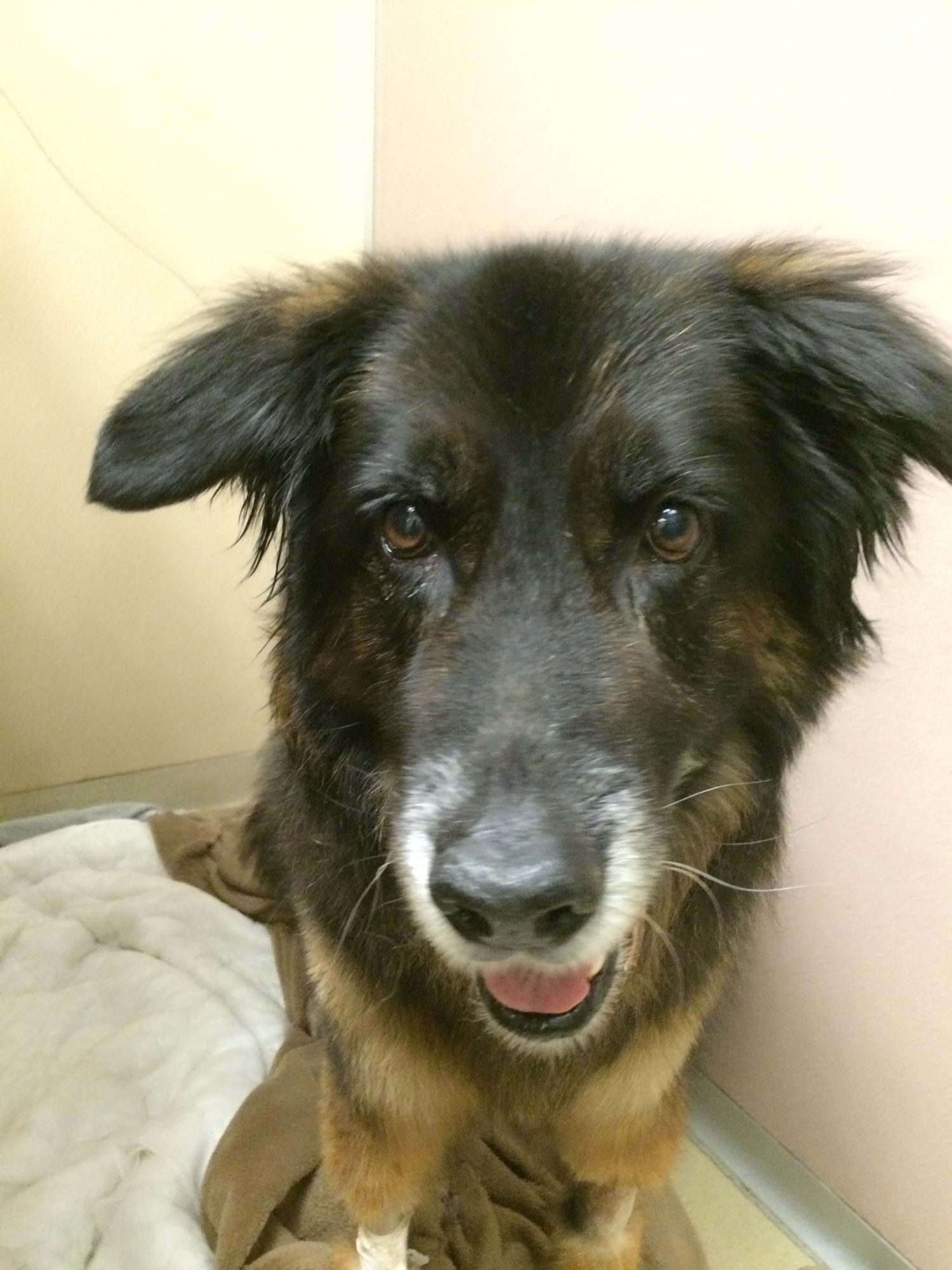 Yuengling, a 7-year-old German Shepherd, had swelling along the left side of his tongue. The mass was so large that Yuengling was having difficulty breathing.
Yuengling, a 7-year-old German Shepherd, had swelling along the left side of his tongue. The mass was so large that Yuengling was having difficulty breathing.
This is called a ranula, or a mucocele. It’s a large pocket of saliva often formed after trauma to a salivary gland. I performed surgery at Berks Animal Emergency & Referral Center and cut the pocket open and sutured the edges together.
But before I could close the incision, the thick, ropy saliva needed to be aspirated. You can see the mass and part of the surgery in the video below.

Dr. Phil Zeltzman is a traveling veterinary surgeon in Pennsylvania & New Jersey. An award-winning author, he loves to share his adventures in practice along with information about vet medicine and surgery that can really help your pets. Dr. Zeltzman specializes in orthopedic, neurologic, cancer, and soft tissue surgeries for dogs, cats, and small exotics. By working with local family vets, he offers the best surgical care, safest anesthesia, and utmost pain management to all his patients. Sign up to get an email when he updates his blog, and follow him on Facebook, too!
Rescued Dachshund serves as powerful reminder to spay your pets
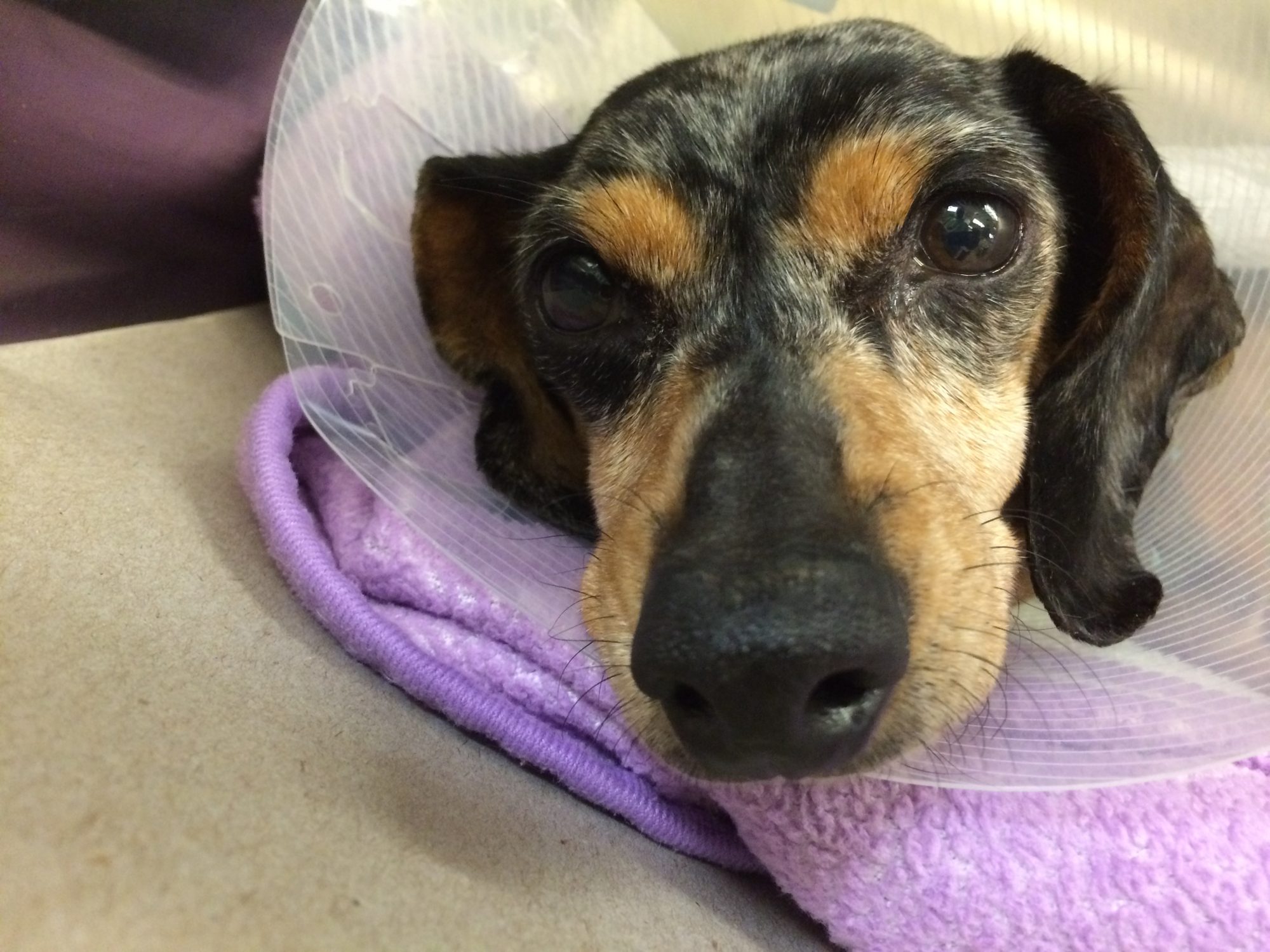 Angel was rescued after she was found running on the side of the road. An approximately 8-year-old Doxie, this sweet girl needed all the help she could get.
Angel was rescued after she was found running on the side of the road. An approximately 8-year-old Doxie, this sweet girl needed all the help she could get.
She was suffering with two large mammary masses – one with open draining wounds.
Because there was a 50-50 chance the masses were cancerous, there was a risk of spreading to the lung. We took chest X-rays before surgery. It didn’t show any spreading to the lungs, but it did show calcium deposits inside the tumors.
This surgery at Berks Animal Emergency & Referral Center was quite the challenge. Removing all the affected tissue required removal of the 2 masses and some healthy skin around it. In addition, in order to try to “get it all”, some of the muscles of her belly (her abs) were removed. She was also spayed during the procedure. The skin stitches were so tight, I was concerned that they would pull through the skin. To try to decrease that risk, a few special sutures, called stent sutures, were placed along the long incision. One week after surgery, the incision looked great and the stents were removed.
Unfortunately, the biopsy of the masses came back as low-grade cancer.
The only way to virtually eliminate the risk of breast cancer is to spay your female dog (or cat) before her first heat cycle.
Dogs with mammary tumors still should be spayed. It’s too late to prevent mammary tumors, but you can stop a life-threatening infection of the uterus called pyometra.
Angel is looking for a foster home or a furrever home to provide a comfortable place to recover and get the TLC she desperately deserves! Please contact Dachshund Rescue of Bucks County at www.doxierescue.com or (215) 736-3338 for more information.
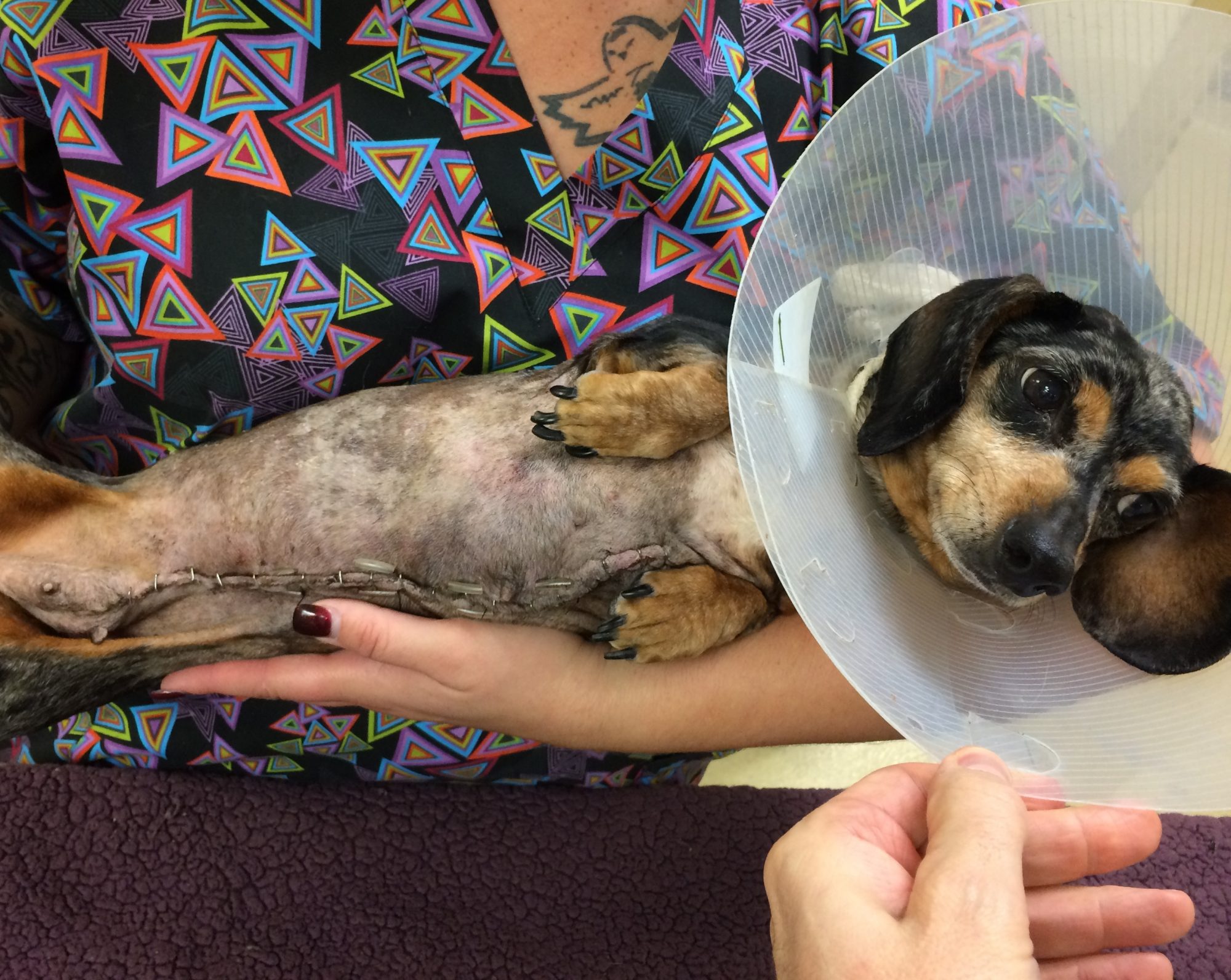
Angel is recovering nicely one week after surgery.
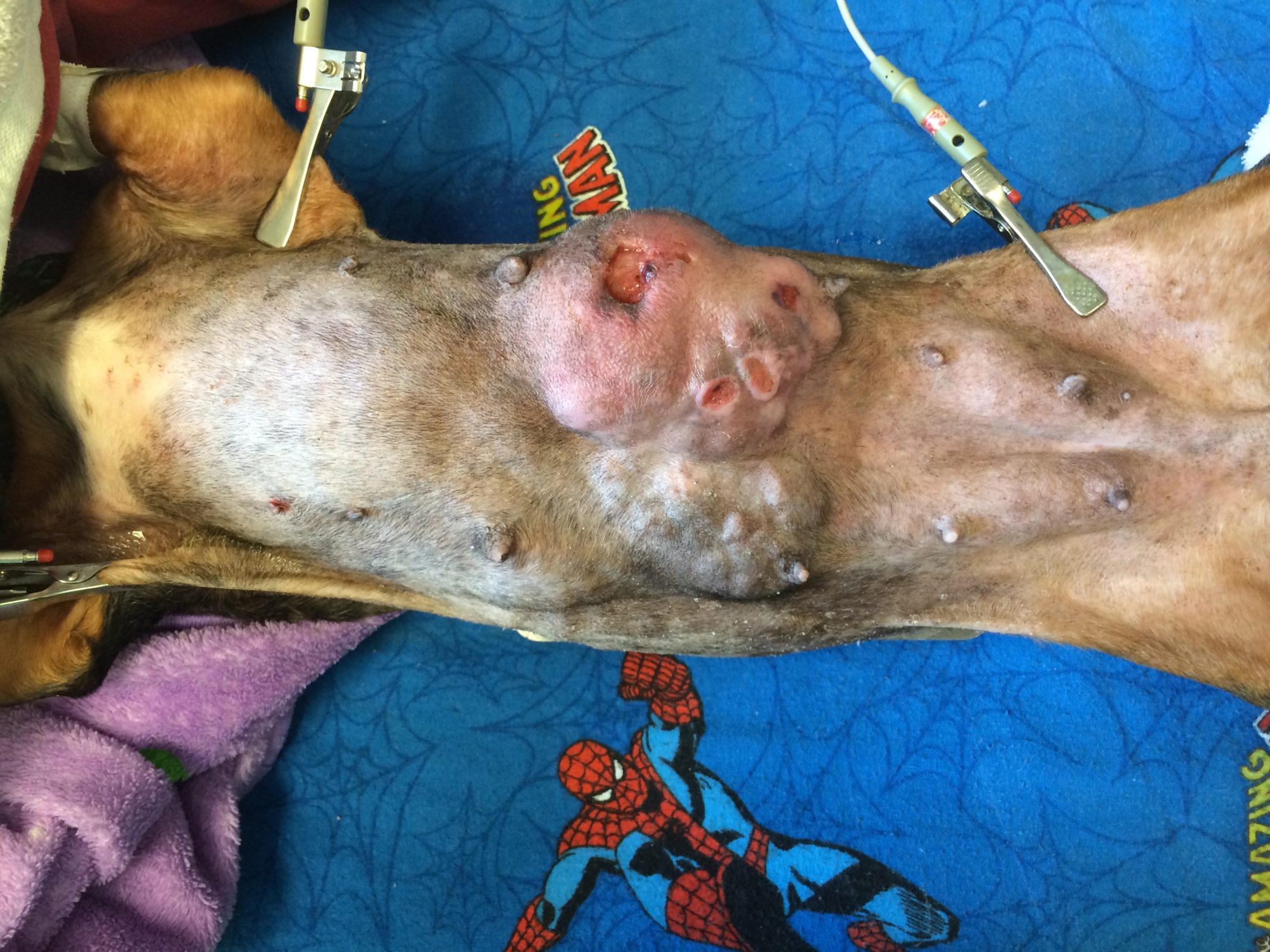 Angel’s mammary tumors before surgery. |
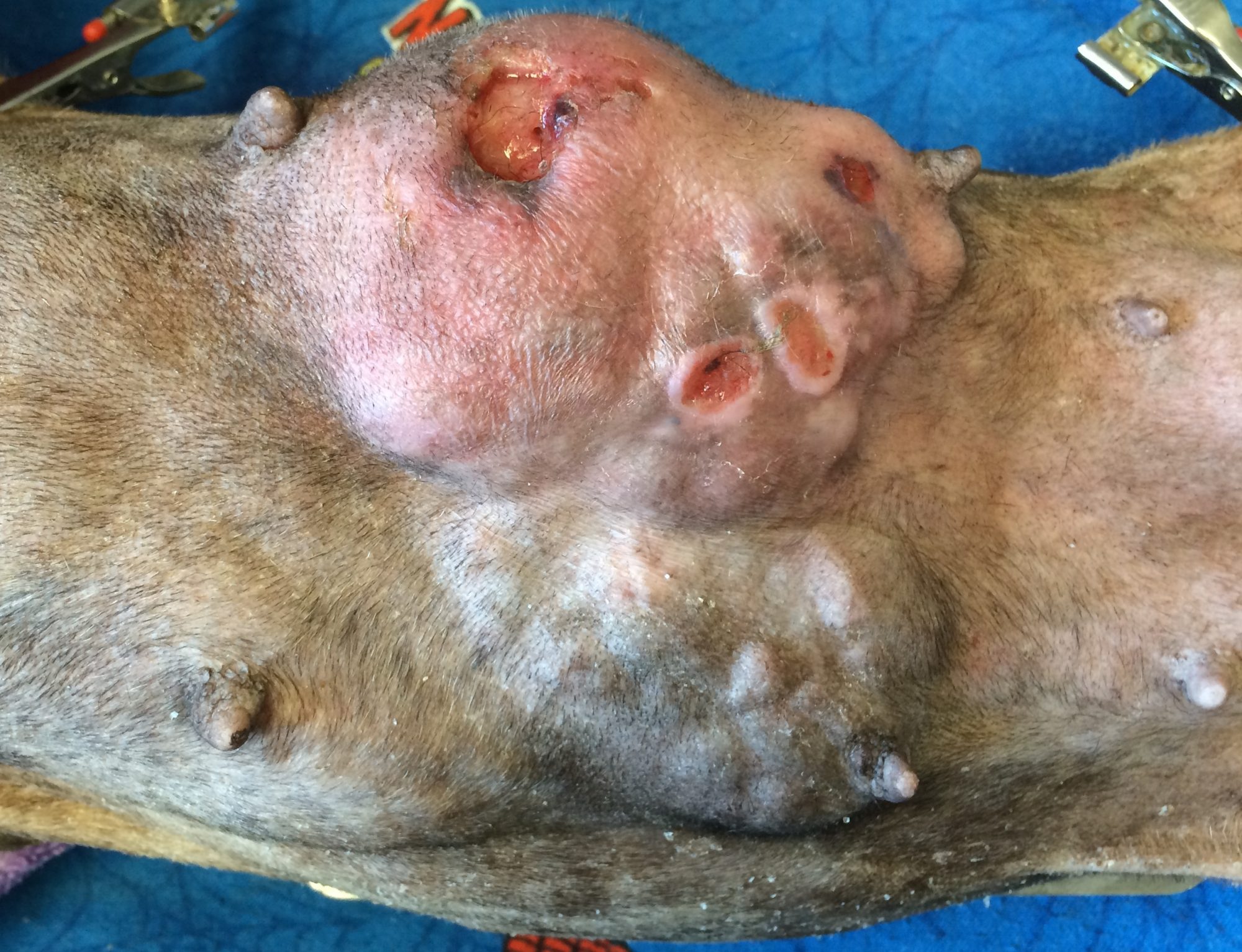 A close up of the mammary masses. |
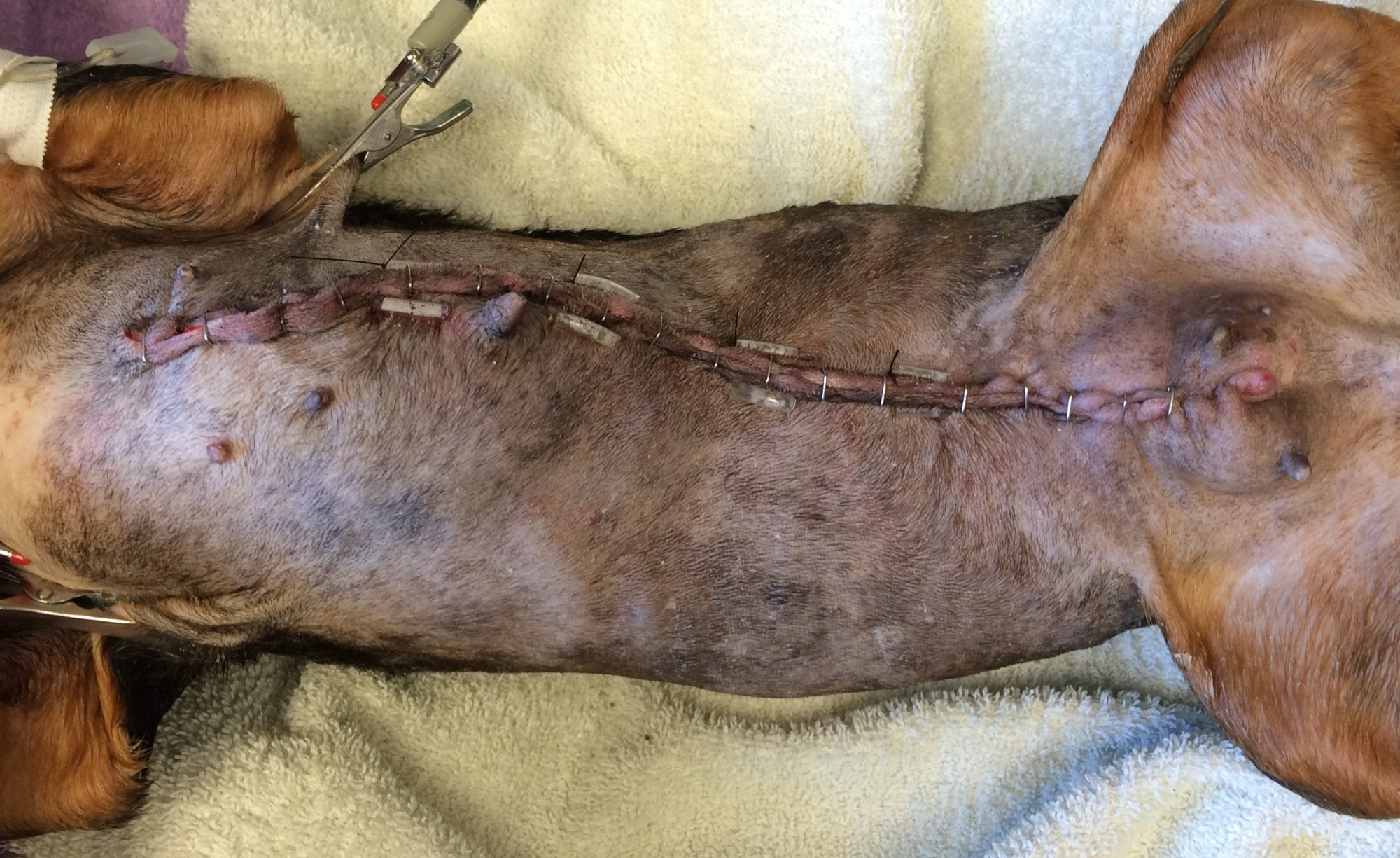 Angel’s surgery was complicated, and closing the incision was a challenge. |
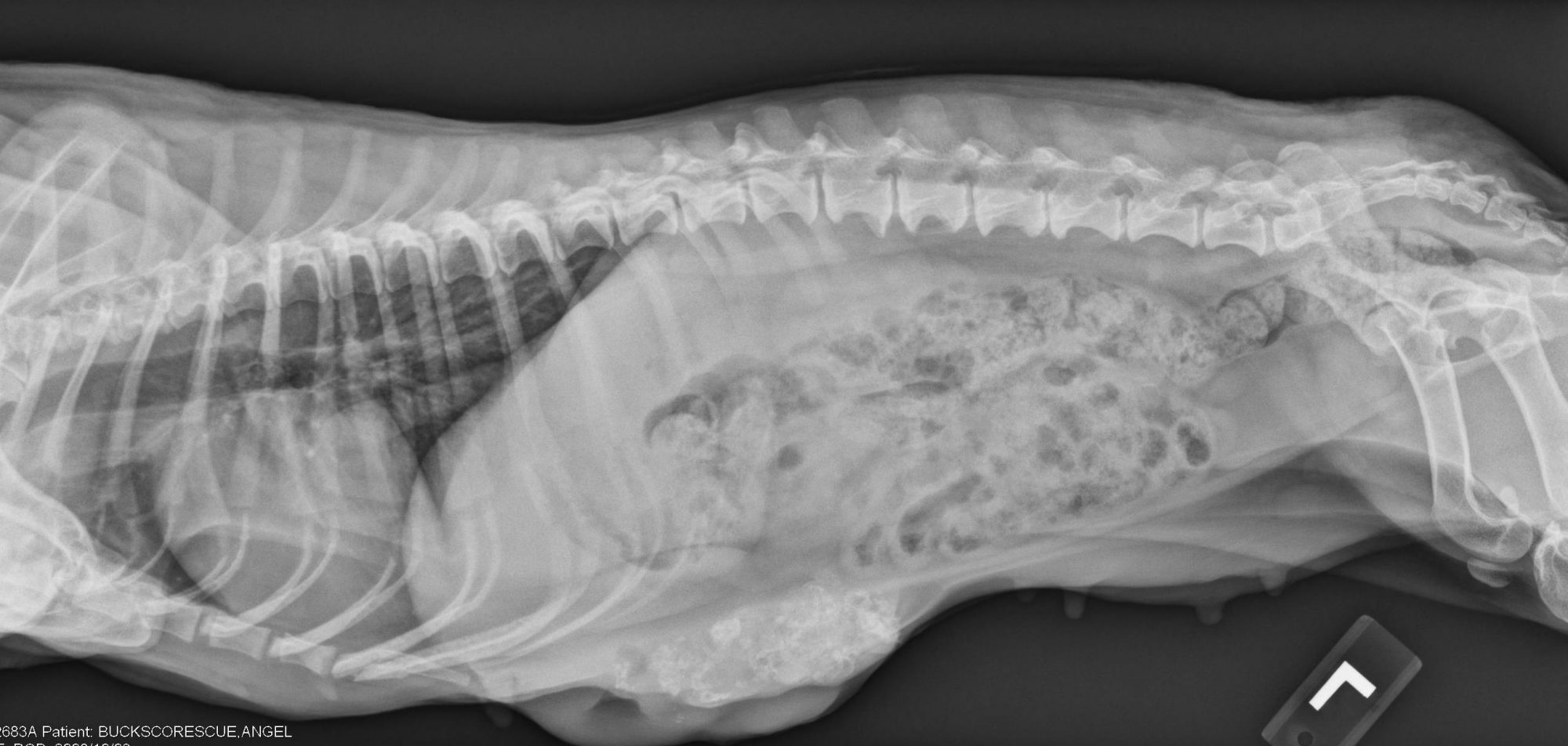 You can see calcium deposits in the X-ray. |

Dr. Phil Zeltzman is a traveling veterinary surgeon in Pennsylvania & New Jersey. An award-winning author, he loves to share his adventures in practice along with information about vet medicine and surgery that can really help your pets. Dr. Zeltzman specializes in orthopedic, neurologic, cancer, and soft tissue surgeries for dogs, cats, and small exotics. By working with local family vets, he offers the best surgical care, safest anesthesia, and utmost pain management to all his patients. Sign up to get an email when he updates his blog, and follow him on Facebook, too!
Owners’ smart choice saves Boston Terrier from difficult surgery
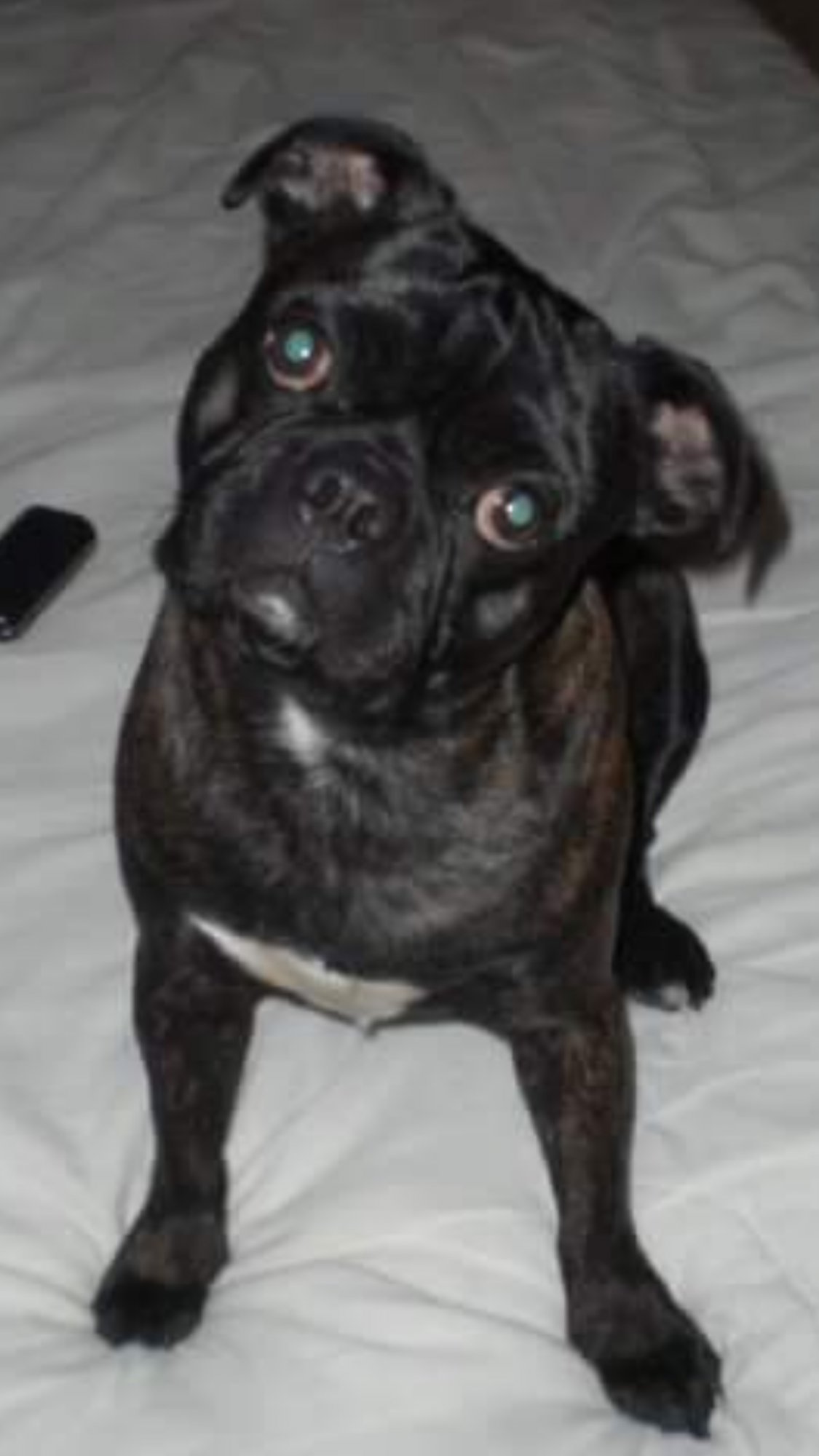 Bruiser is a nine-year-old Boston Terrier mix who was having some discomfort in his hind end. His owners took him to see his family vet. A rectal exam revealed a firm mass just below the anus, hidden under the skin. Surgery was recommended to remove and biopsy the mass.
Bruiser is a nine-year-old Boston Terrier mix who was having some discomfort in his hind end. His owners took him to see his family vet. A rectal exam revealed a firm mass just below the anus, hidden under the skin. Surgery was recommended to remove and biopsy the mass.
This surgery can be a bit tricky. The mass needs to be removed entirely, within healthy tissue to “get it all” or have clean margins. Yet we can’t be overly aggressive! We need to preserve the anus and more importantly, the muscles around it, which are responsible for continence.
Surgery at Brodheadsville Veterinary Clinic went very well. Bruiser had to wear a plastic cone around his head for three weeks. He went home with pain medications and antibiotics. The mass was sent out for biopsy.
The biopsy came back a week later…benign! It was a perianal gland adenoma, a common tumor in this area.
Bruiser is lucky his owners decided to remove the mass while it was fairly small. Removing a larger mass would be much more invasive. Early detection and a good decision from Bruiser’s owners made the surgery and recovery much smoother for Bruiser!
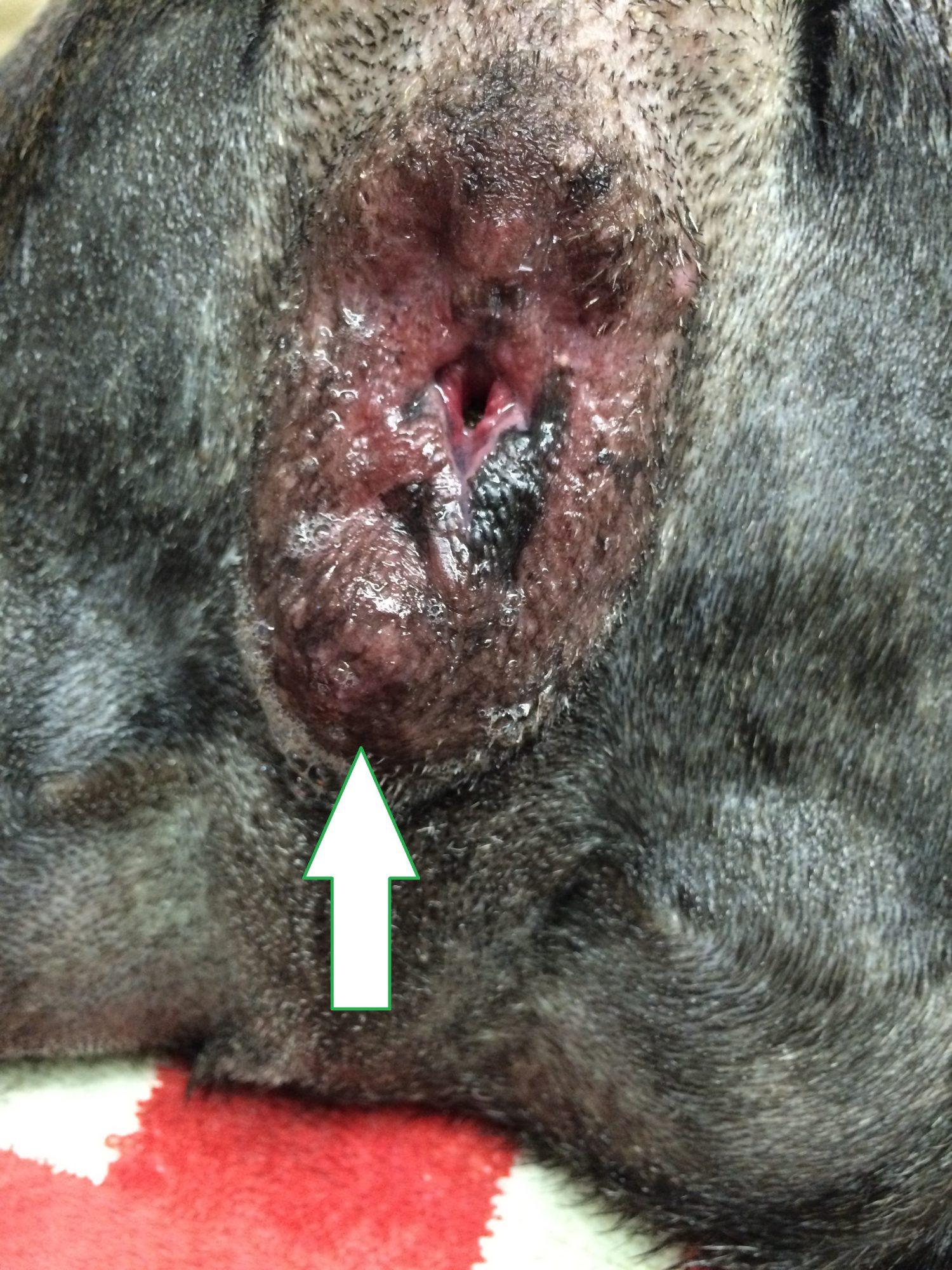
The arrow is pointing to a benign mass.

Dr. Phil Zeltzman is a traveling veterinary surgeon in Pennsylvania & New Jersey. An award-winning author, he loves to share his adventures in practice along with information about vet medicine and surgery that can really help your pets. Dr. Zeltzman specializes in orthopedic, neurologic, cancer, and soft tissue surgeries for dogs, cats, and small exotics. By working with local family vets, he offers the best surgical care, safest anesthesia, and utmost pain management to all his patients. Sign up to get an email when he updates his blog, and follow him on Facebook, too!
Outdoor cat lands in surgery after injury
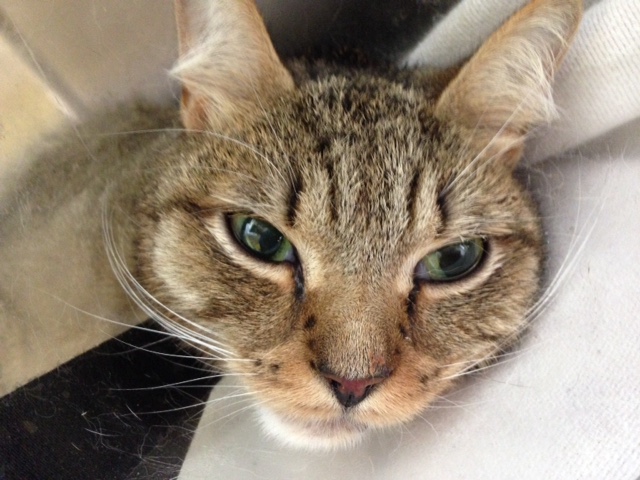 Frady’s owners brought her to the veterinarian with a broken tibia after she suffered an unknown trauma outdoors.
Frady’s owners brought her to the veterinarian with a broken tibia after she suffered an unknown trauma outdoors.
A two-year-old female kitty, Frady needed surgical intervention to fix the broken bone. After we started operating at Orefield Veterinary Clinic, we realized that the bone wasn’t fractured into two pieces – it was shattered!
I repaired the bone with a stainless steel plate, thirteen screws, and two wires. Then I reinforced the repair with a splint.
Outdoor cats are at increased risk for injuries or worse. Sadly, we don’t live in a cat friendly world. Cats get attacked, shot at, or hit by cars all the time. Don’t let your cat be a victim! Keeping your kitty indoors may save her life.
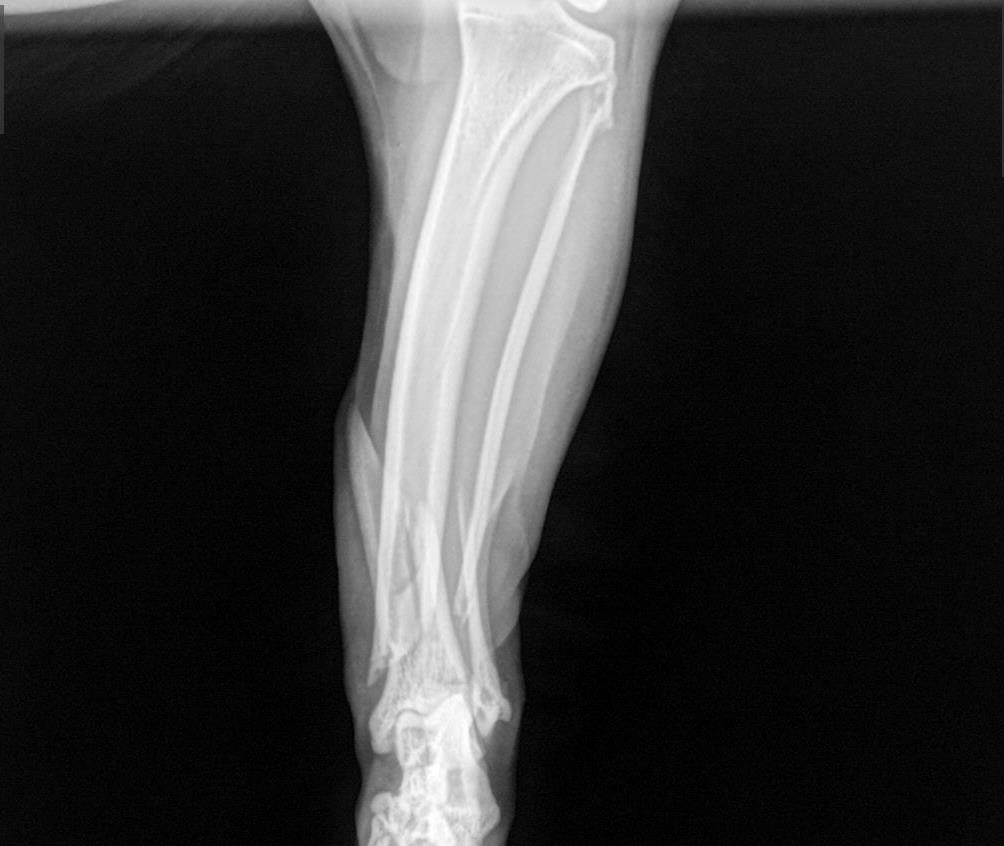 The shattered bone before being repaired. |
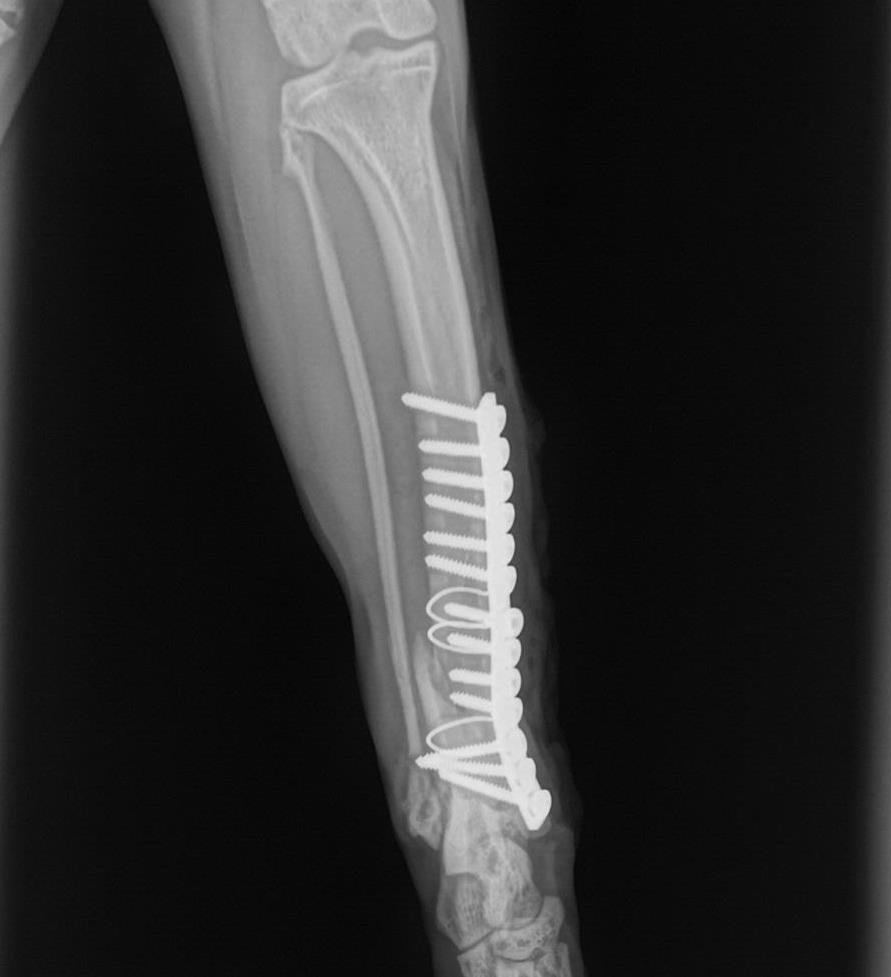 Here you can see the plate, screws, and wires used to repair the shattered bone. |
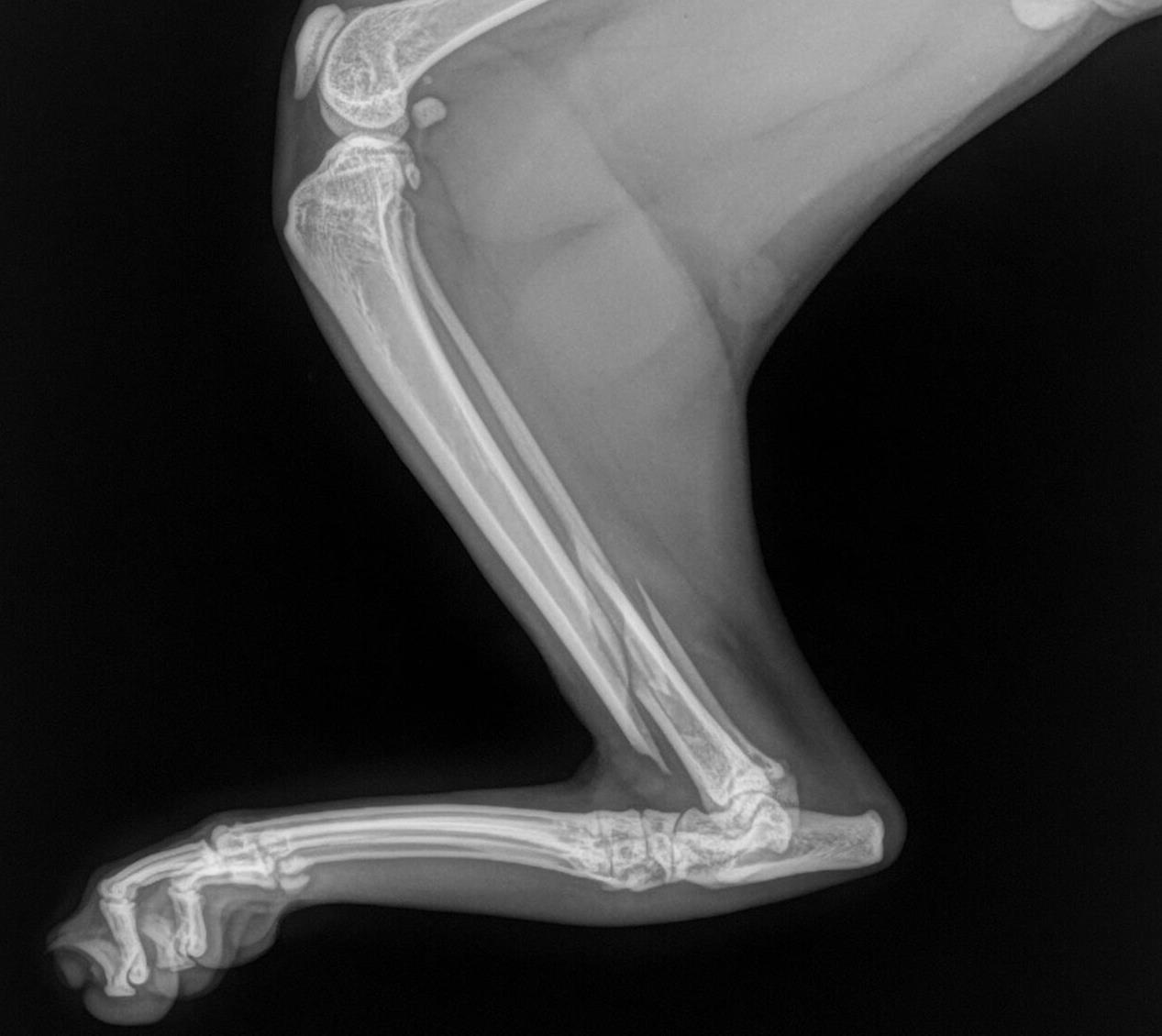 Another X-ray taken before the repair. |
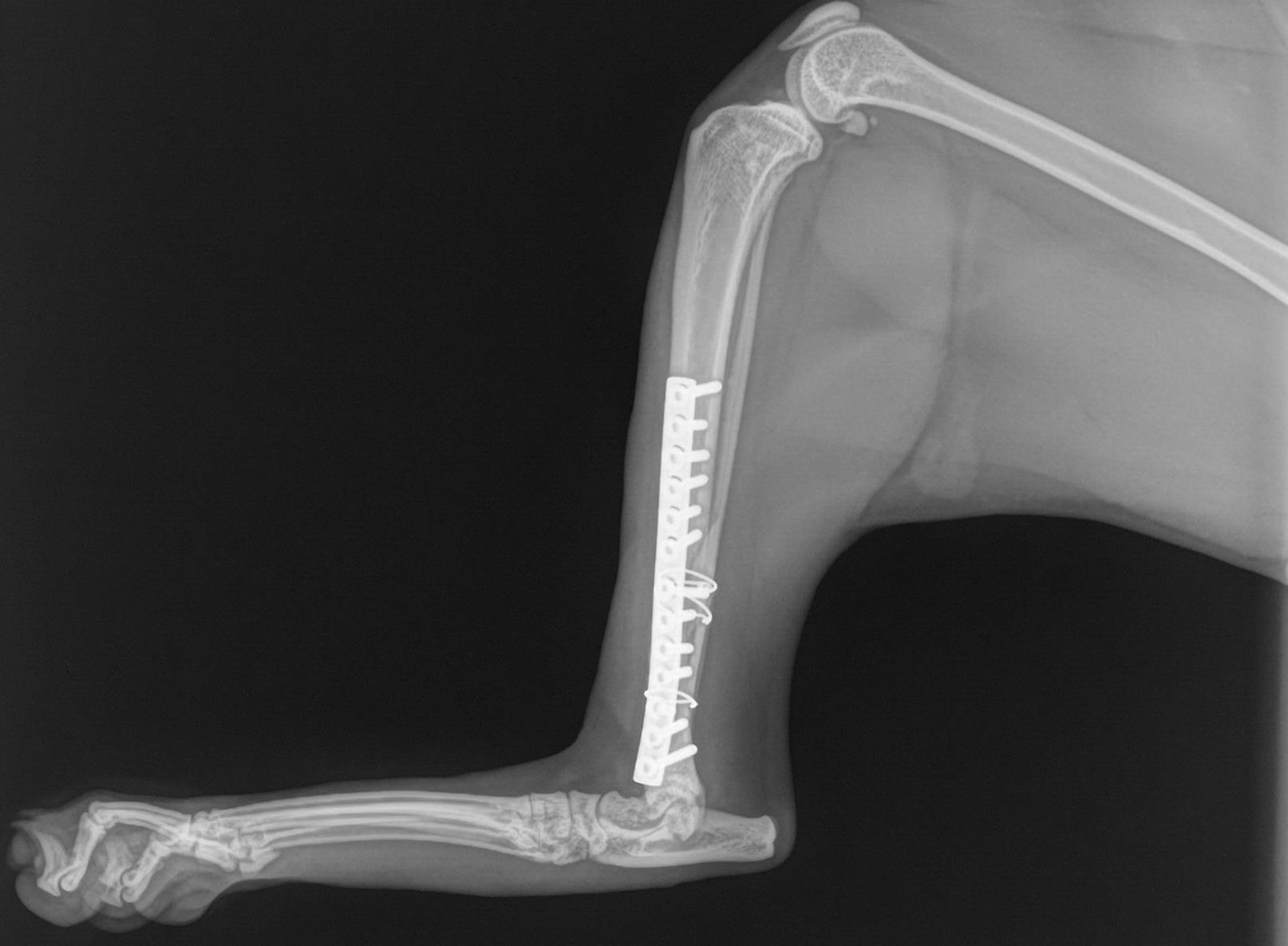 To fix the shattered tibia, I used thirteen screws, a plate, and two wires. |

Dr. Phil Zeltzman is a traveling veterinary surgeon in Pennsylvania & New Jersey. An award-winning author, he loves to share his adventures in practice along with information about vet medicine and surgery that can really help your pets. Dr. Zeltzman specializes in orthopedic, neurologic, cancer, and soft tissue surgeries for dogs, cats, and small exotics. By working with local family vets, he offers the best surgical care, safest anesthesia, and utmost pain management to all his patients. Sign up to get an email when he updates his blog, and follow him on Facebook, too!
Jack Russell saved after he snacks on carpet
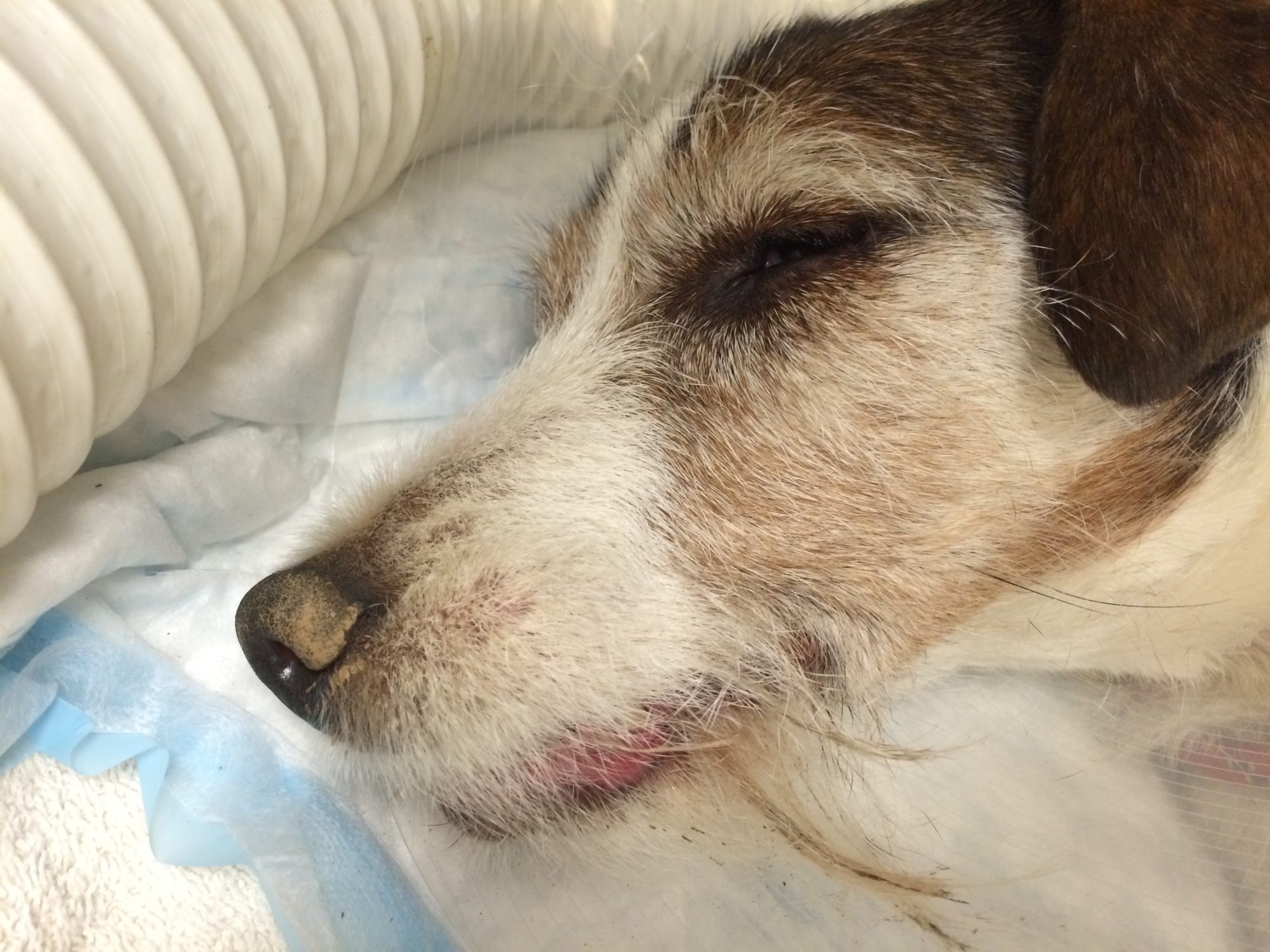 Sam is a 12-year-old Jack Russell, who had been vomiting and was lethargic for a few days. X-rays and an ultrasound revealed that he had swallowed a foreign body. There was a suspicion that he chewed pieces of carpet.
Sam is a 12-year-old Jack Russell, who had been vomiting and was lethargic for a few days. X-rays and an ultrasound revealed that he had swallowed a foreign body. There was a suspicion that he chewed pieces of carpet.
Carpet is really made of a very long string, so the risk was that Sam had eaten what is called a “linear” foreign body. Linear foreign bodies can be deadly if they cut into the intestine.
Sam was taken to surgery at Berks Animal Emergency & Referral Center. Two foreign bodies could be felt: one in the stomach and one in the small intestine. You can watch the removal of the string from the stomach and the intestine below. The video does contain graphic footage of a surgical procedure, so you may want to skip it if you’re sensitive to that type of footage!
Although we expect puppies (and kittens) to eat things they shouldn’t, older pets should know better. Most of the time, when an adult swallows a foreign body I suspect there is an underlying medical condition. I always take biopsies of the stomach and the intestine during surgery to check. Sure enough, Sam’s biopsies revealed a common condition called Inflammatory Bowel Disease (IBD). This disease can and should be treated to make him feel better and to hopefully prevent him from swallowing another foreign body.
Happily, Sam recovered nicely after surgery! Make sure to doggy proof your house to reduce the risk your pet will eat something dangerous. And if your dog or cat is vomiting, don’t wait! Take him to the vet to get it checked out.
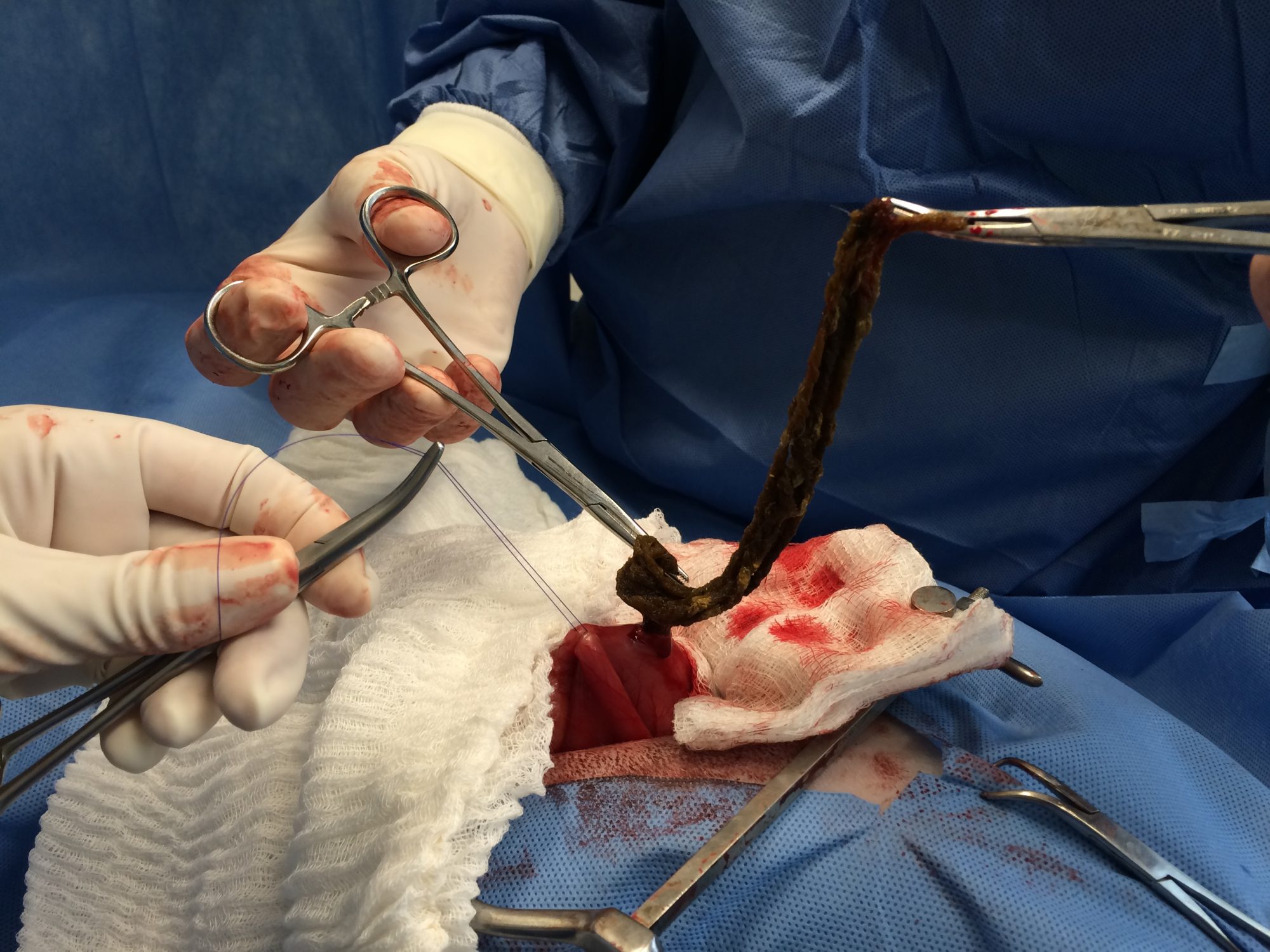 Removing the string from the stomach. |
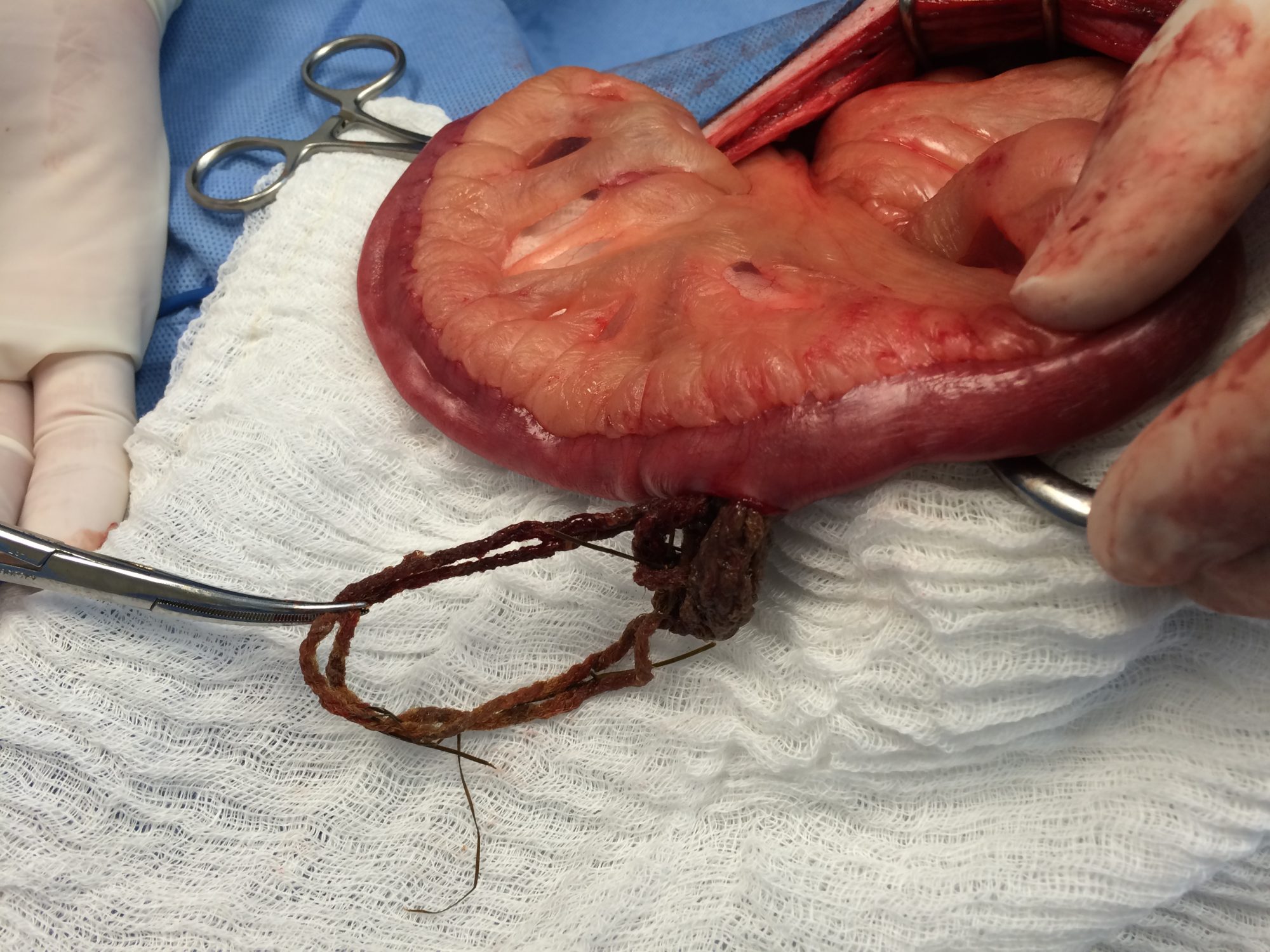 Removing the string from the intestine. |
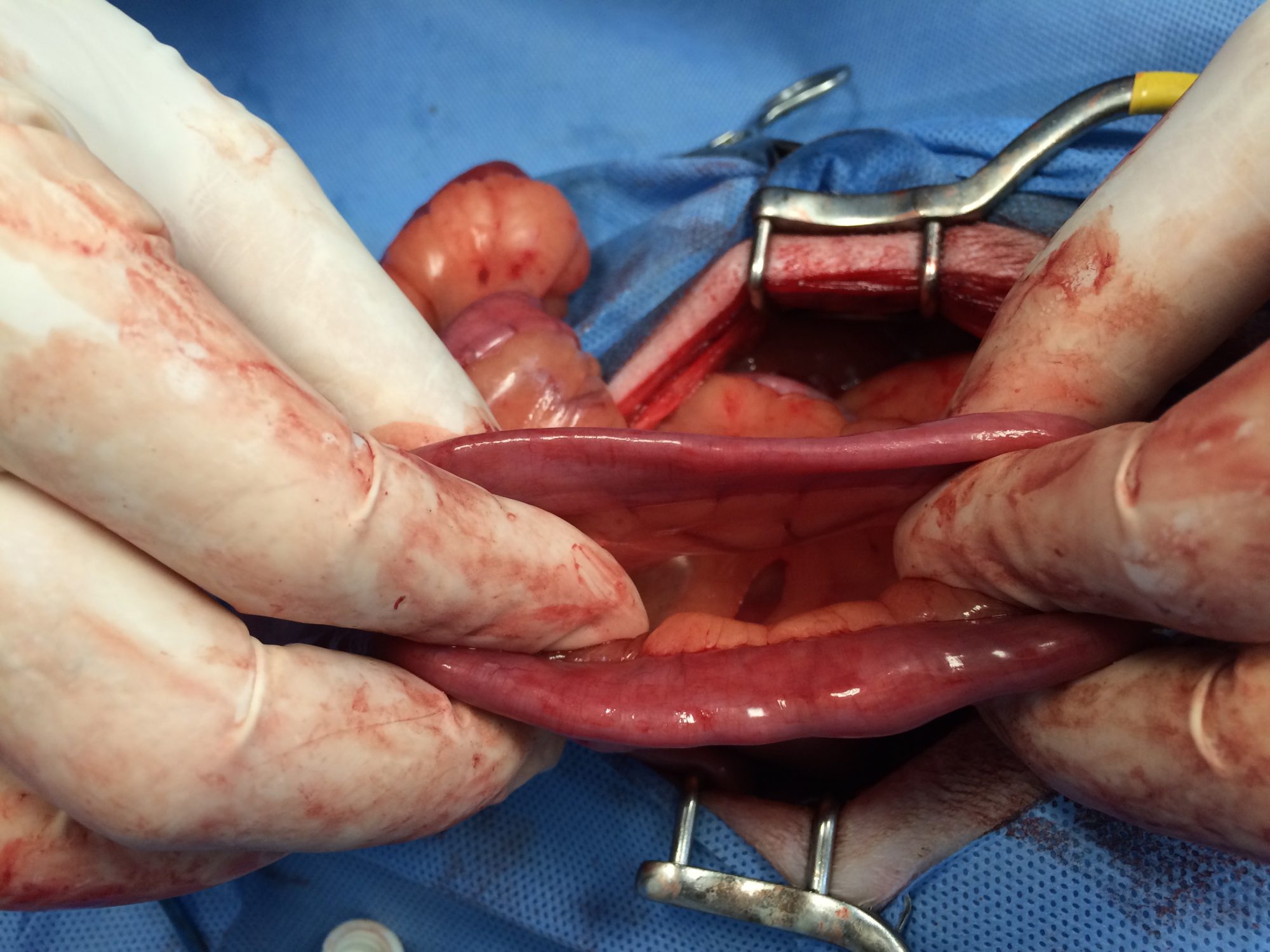 The thin loop is normal, but the thick loop has IBD. |
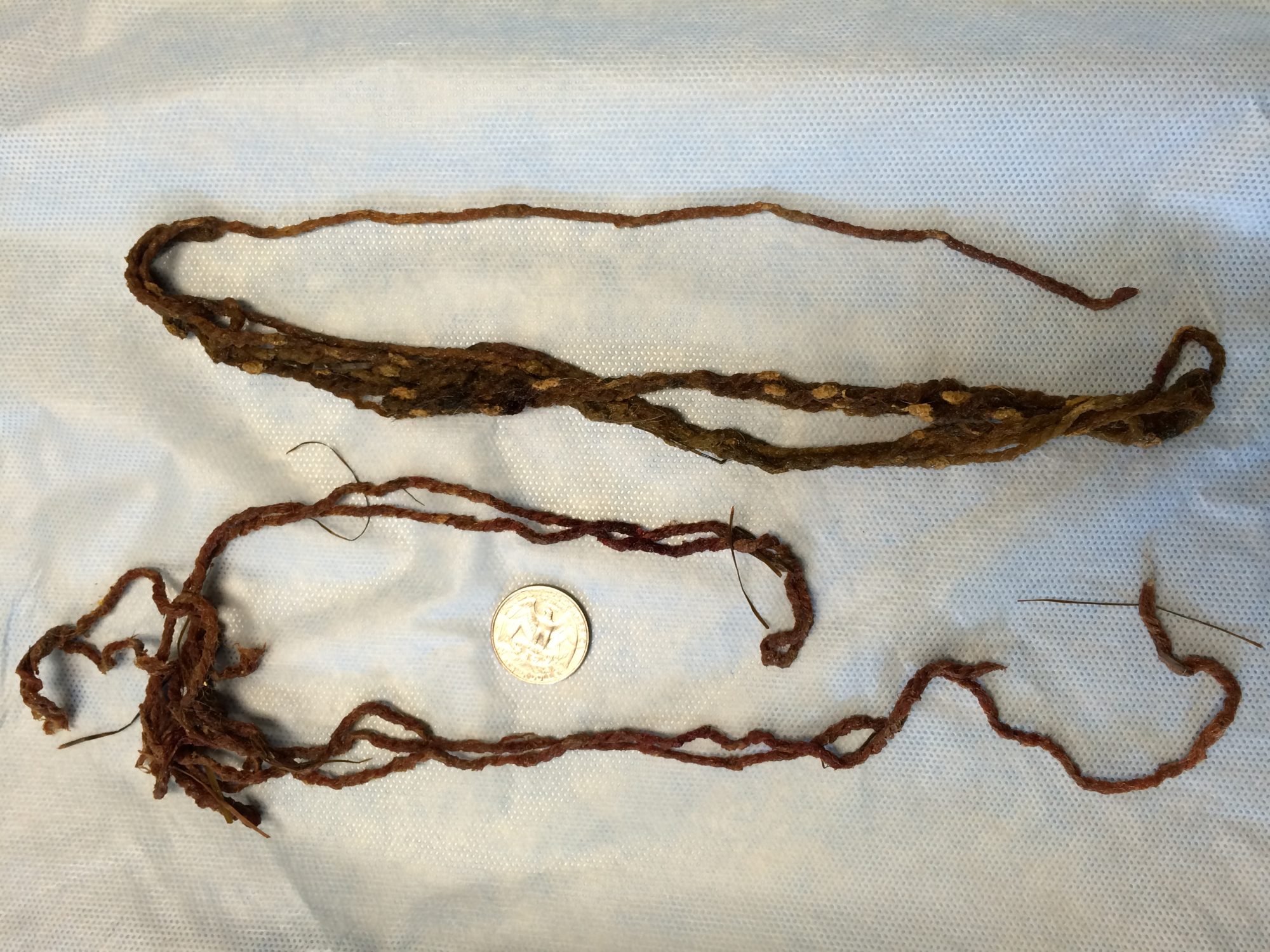 Here’s all the string Sam managed to eat. |

Dr. Phil Zeltzman is a traveling veterinary surgeon in Pennsylvania & New Jersey. An award-winning author, he loves to share his adventures in practice along with information about vet medicine and surgery that can really help your pets. Dr. Zeltzman specializes in orthopedic, neurologic, cancer, and soft tissue surgeries for dogs, cats, and small exotics. By working with local family vets, he offers the best surgical care, safest anesthesia, and utmost pain management to all his patients. Sign up to get an email when he updates his blog, and follow him on Facebook, too!

